Navigation
Install the app
How to install the app on iOS
Follow along with the video below to see how to install our site as a web app on your home screen.
Note: This feature may not be available in some browsers.
More options
You are using an out of date browser. It may not display this or other websites correctly.
You should upgrade or use an alternative browser.
You should upgrade or use an alternative browser.
Hello - check out my water parameter spreadsheet
Thats kinda my problem, I got some frags and now I have a few small, pink, purple, green and yellow dots on one rock. I had a bout with green hair algae in my 20 gal, and I have a frag on that rock that's not doing so well, so scrubbed the small patch of green hair off the rock, gave the coral side of the rock a dip in iodine and then I moved it to the 75 gal. After I moved it the dots appeared, even in my 20 gal I have some neon green and yellow dots that look different than the green hair algae next to it. I just wanna be sure these green dots are in fact coralline and not green hair. Th dark green patch on top of that rock is where the green hair was and I scrubbed the heck out of that patch with a tootthbrush, but now there’s a dark green spot getting darker on the top of the rock.Welcome to the salty side and the community! That's cool about the experience you gained on the job so thanks for sharing your spreadsheet that's really helpful! I also want to say those are also nice looking tanks! I will definitely follow along with your coralline algae progress. I'm almost a year in and still don't have coralline and I have some that has come in on frags. I might have to dose it.
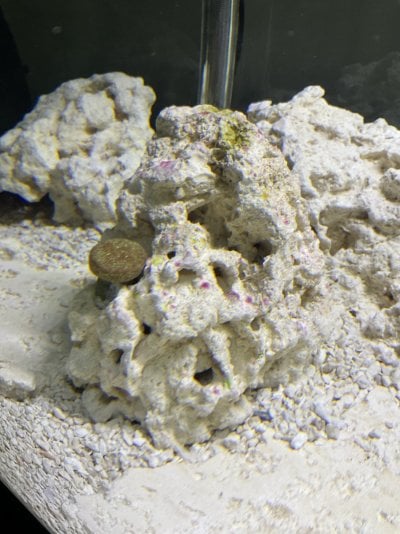
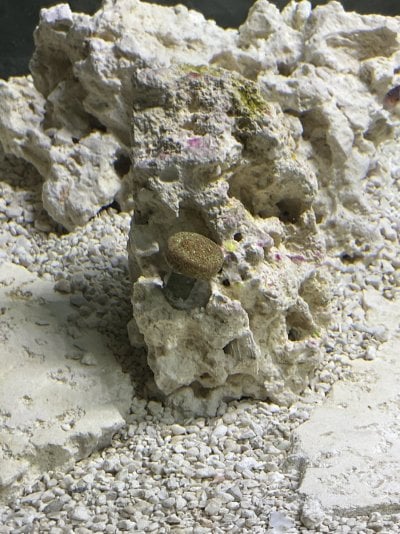
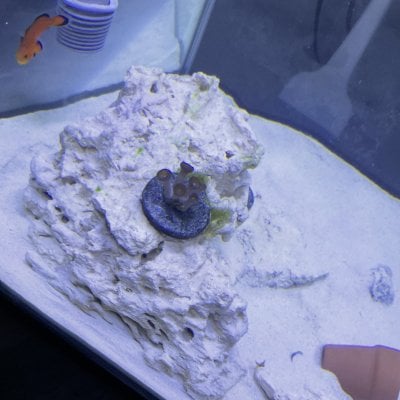
Last edited:
The green could be algae but the yellow and pink look like they could be coralline. Having said that I keep reading that if coralline isn't introduced somehow then it can't be there which makes sense. I thought I had coralline but it turned out to be cyano (my ugly stage had begun). Haha. I guess time will tell for you. I think I read there is a company that has a multicoloured coralline concoction that you can dose. It might be Seachem. I think I'm going to try that if it doesn't spread from the frag I have that has it. I think my parameters are stable enough now.Thats kinda my problem, I got some frags and now I have a few small, pink, purple, green and yellow dots on one rock. I had a bout with green hair algae in my 20 gal, and I have a frag on that rock that's not doing so well, so scrubbed the small patch of green hair off the rock, gave the coral side of the rock a dip in iodine and then I moved it to the 75 gal. After I moved it the dots appeared, even in my 20 gal I have some neon green and yellow dots that look different than the green hair algae next to it. I just wanna be sure these green dots are in fact coralline and not green hair. Th dark green patch on top of that rock is where the green hair was and I scrubbed the heck out of that patch with a tootthbrush, but now there’s a dark green spot getting darker on the top of the rock.



Welcome to R2R. you tank looks great. And thanks for sharing your spreadsheet.
I just went over the green hair algae with a tooth brush taped to the end of my gravel vacuum, just gently scrubbed the heck out of it until it was all gone from around the tiny zoa, I'm considering dosing 1 mL of 3% hydrogen peroxide to take care of any green hairs that might have floated away. I plan to replace the filter cartridge tomorrow morning after the tank has turned over all night.
I've only got the one zoa and some green-star polyps that I have removed twice for red bubble algae. I took care of that red bubble algae as soon as I noticed the green-stars were withdrawing, and now I have a piece of green-star branch glued to a small rock, which was excised when I had to give it a second dip in iodine for red bubble algae. That red sh was identifiably scary to see bubbling up on my green-star. I've let the green hair go as long as I have bc I hastily glued the zoe down before I really, really, really knew to dip them - it literally takes 30 mins and $20 in stuff.
All of my other corals have responded well to a 15-20 min / 1 cap Seachem Dip in half-gallon of tank water for a stronger mix. Then I move them to a fresh water holding bowl to move them to the tank. I've only done this one or two corals at a time so the last one isn't waiting in the fresh water too long. I'm too scared to try hydrogen peroxide, but I'm not about to let green hair take over my first tank this early. This is a mistake three months in the making, as the zoa coral was added a few months ago and I've already trimmed the green hair algae once. We shall see - I'll update soon.
I've only got the one zoa and some green-star polyps that I have removed twice for red bubble algae. I took care of that red bubble algae as soon as I noticed the green-stars were withdrawing, and now I have a piece of green-star branch glued to a small rock, which was excised when I had to give it a second dip in iodine for red bubble algae. That red sh was identifiably scary to see bubbling up on my green-star. I've let the green hair go as long as I have bc I hastily glued the zoe down before I really, really, really knew to dip them - it literally takes 30 mins and $20 in stuff.
All of my other corals have responded well to a 15-20 min / 1 cap Seachem Dip in half-gallon of tank water for a stronger mix. Then I move them to a fresh water holding bowl to move them to the tank. I've only done this one or two corals at a time so the last one isn't waiting in the fresh water too long. I'm too scared to try hydrogen peroxide, but I'm not about to let green hair take over my first tank this early. This is a mistake three months in the making, as the zoa coral was added a few months ago and I've already trimmed the green hair algae once. We shall see - I'll update soon.

welcome aboard the r2r board!
Hello and welcome to R2R @Gigajoulz . Glad you joined us!! You were lucky enough to have a job that really prepared you for this hobby.
- Joined
- Jan 9, 2020
- Messages
- 46
- Reaction score
- 145
Welcome to the community! The spreadsheet looks like a great tool! Tanks look good so far. I cant wait to see what they look like in a few more months!Hello, all! I’m from Central Alabama and recently started my first saltwater fish tanks; the first is 20 gal and has been running since the start of March. The second tank is 75 gal and was started a few weeks ago after I got the hang of water changes, testing the water, and getting used to other maintenance.
My Chemistry background
I worked for a ground water monitoring company for two years ('19-'21), and worked part-time in the field collecting samples and part-time in the laboratory. Our goal was to clean up underground gasoline spills where under ground storage tanks at gas stations leaked. I got lots of time in the lab analyzing water samples for total lead using a SpectrAA lead graphite furnace, where I would digest and extract soil samples using nitric acid and Di water and analyze the water samples using super cool lasers and various acids.
This experience in the lab helped me develop techniques for testing my tank water, and I was able to rip off a spreadsheet we used in the field to track parameters for the soil & water remediation systems the company has scattered across the state. My spread sheet tracks water parameters, tank maintenance, livestock, and feeding and dosing. The original spreadsheet was primarily used for tracking vacuum PSI and maintenance for the remediation systems, but it has become a crucial tool for up-keeping my tanks.
Let me know if you have an suggestions for things to add to the spreadsheet. I am no saltwater chemist, but anything I can do to help I’d be happy to share and this has helped me a lot more than I expected. You’ll see in my spread where I experimented with how the HVAC affects the temperature of the tank, when I got diatoms shortly after introducing my second clownfish to the tank while using faucet water for the startup (and how I beat it with bacteria), and my progress of some coral frags.
I look forward to all of your comments and advice. I will soon post a thread on tracking coralline algae and getting it to grow, hoping that you all can she some light on this subject for me and others trying to jump-start that coralline growth and identify algae when it’s not coralline.
Until then, check out these photos of my tanks
P.S. If you don't have Microsoft Office - Excel, or some form of Excel, you can open the spread sheet from this Google Drive link <here, which I may update with successes and failures from time to time as I update my own file. Once open, you can save a copy to your Google Drive or download it as-is.
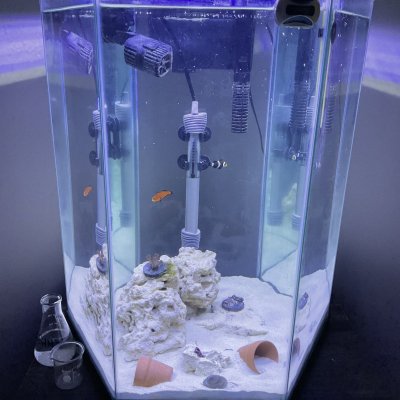
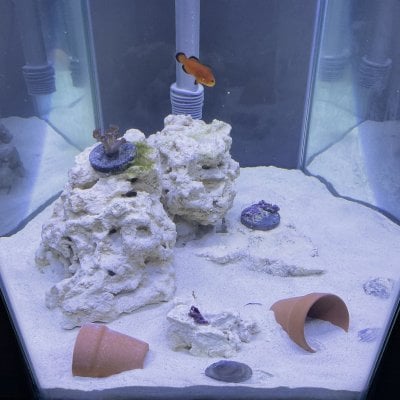
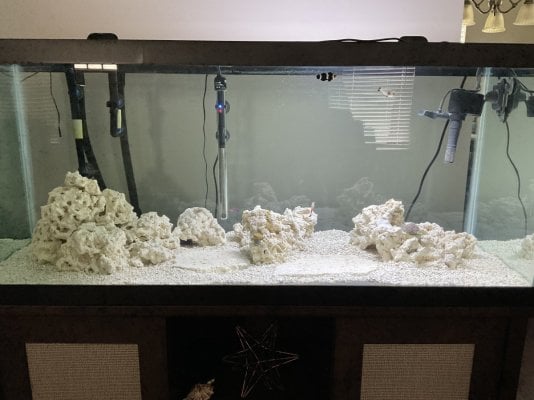
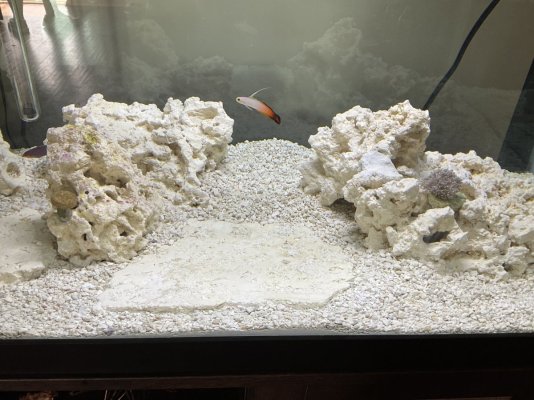
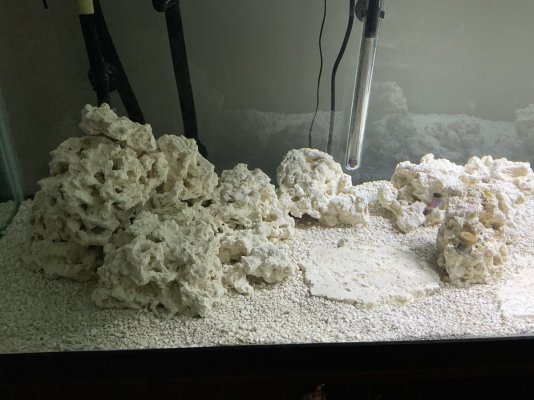
Hello and welcome to the R2R family. We're excited to have you.


Hello and welcome to the channel.
Hello and welcome
I downloaded the file but can't seem to open it to looksie ^_^
Keko21
Valuable Member
View Badges
Partner Member 2024
Article Contributor
Hospitality Award
Ocala Reef Club Member
Reef Pumpkin Carver
MAC of SW Florida
R2R Secret Santa 2023
My Tank Thread
My Aquarium Showcase
izzy1942 try downloading this excel file and open it in Office.com or in Microsoft Excel, and use the Excel Template sheet tab to take advantage of the number formatting (where it shows the unit/metric being measured in the cell with the data). Otherwise, upload this file drive.google.com and use the Google Sheets Template tab with less of the fancy formatting.
This is a more updated version of my data template with chemistry and other knowledge-zone type info in it.
This is what is looks like
Attachments
Similar threads
- Replies
- 2
- Views
- 47
- Replies
- 6
- Views
- 124
- Replies
- 57
- Views
- 1,159
- Replies
- 3
- Views
- 111

















